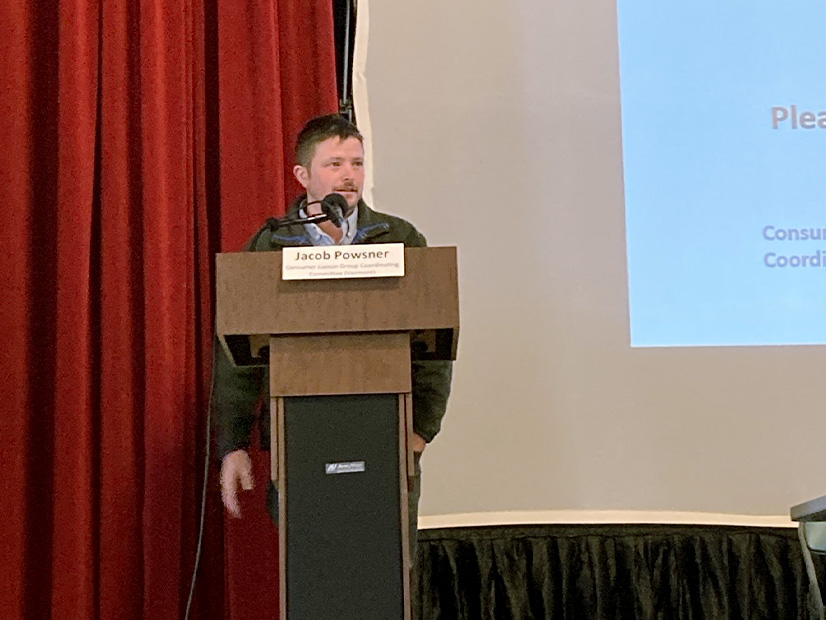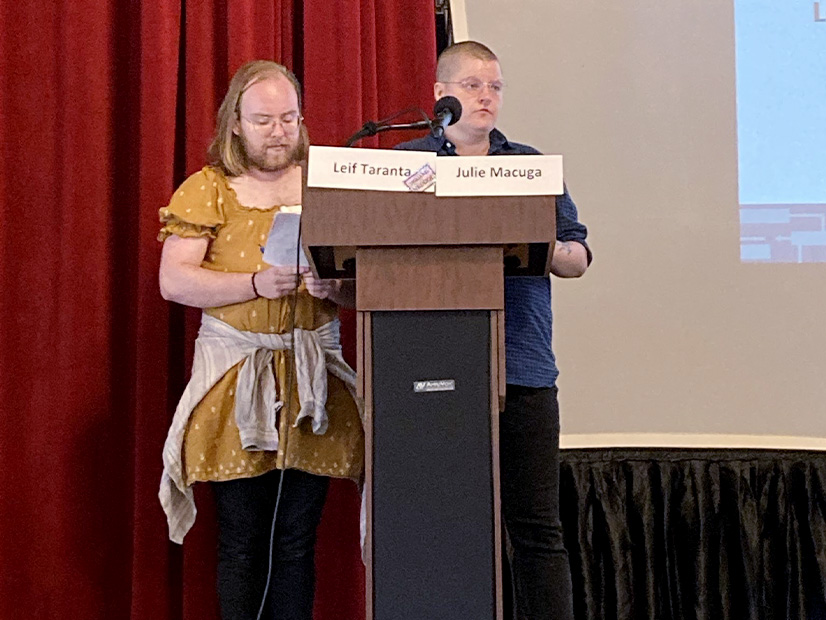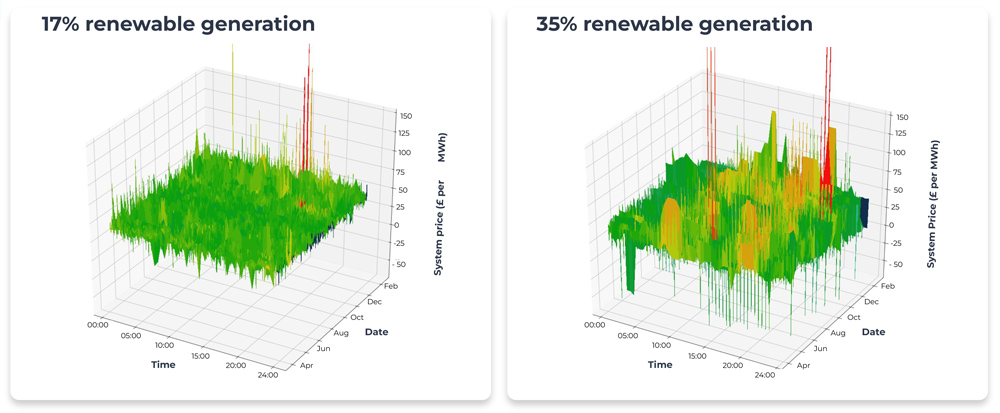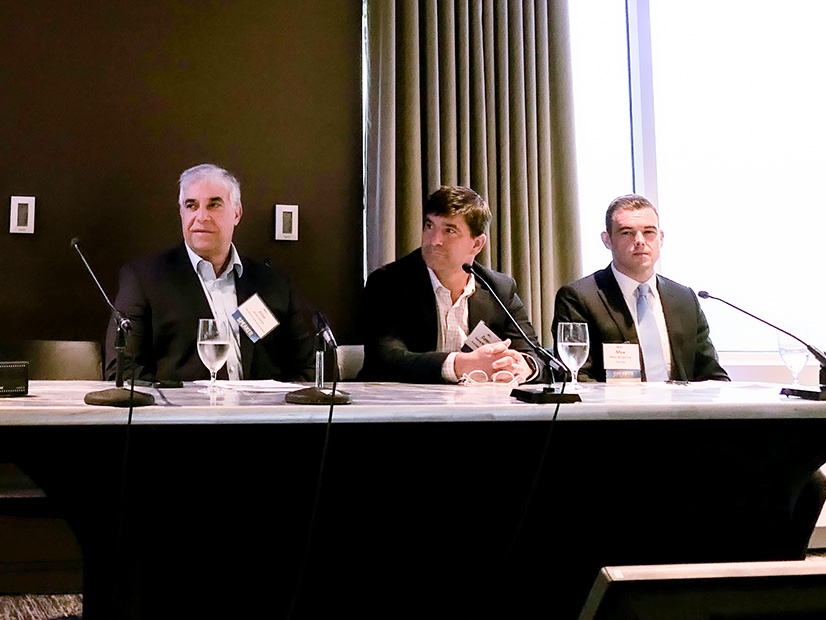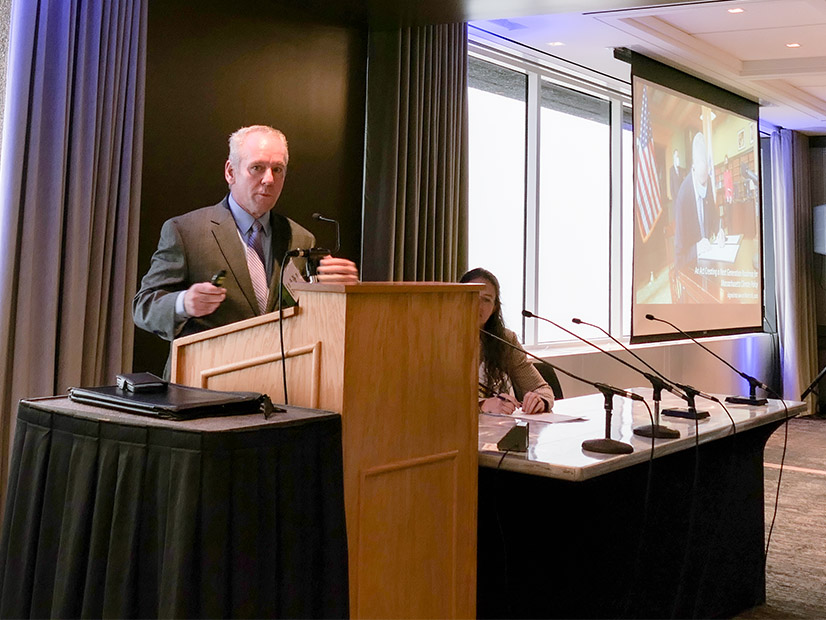Stakeholders from across the Western electricity sector say they see renewed potential for developing a more organized regional market through the open-ended process offered by the West-Wide Governance Pathway Initiative.
But many of them also caution the initiative must become more transparent, both in its processes and its sources of funding.
Those were two of the key takeaways from stakeholder comments filed in response to questions in an Aug. 29 letter circulated by the backers of the initiative, who are seeking to quickly work through “Phase 1” of the effort to define a governance framework and seat a founding board of directors by next January. (See Backers of Independent Western RTO Seek to Move Quickly.)
Utilities regulators from Arizona, California, Oregon, Washington and New Mexico established the initiative in July to improve the prospects for developing a single, West-wide electricity market that pointedly includes California — a response to the competition for members between CAISO’s Extended Day-Ahead Market (EDAM) and SPP’s Markets+.
The comments were posted on the website of the Western Interstate Energy Board. The solicitation received 36 individual comments and five sets of joint comments — a few of which also included contributions from some of the individual commenters.
‘Fresh Look’
The Aug. 29 letter asked stakeholders to address questions related to the initiative, including the pros and cons of it being facilitated outside of any existing organization and the preferred structure, process and scope for Phase 1. It also asked for opinions on the best stakeholder engagement model for enabling broad stakeholder involvement and ensuring efficiency.
Multiple parties pointed to potential benefits of conducting Phase 1 of the Pathway Initiative outside the auspices of any existing organization or process.
A group calling itself “Joint Commenters” — which includes RTO advocacy group Western Freedom; American Clean Power Association; multiple utilities in California, Oregon and Washington; and other industry groups — said the approach offered the advantage of separating “the discussion from existing market institutions and can enable a fresh look at certain structural and governance issues that have been examined in other contexts.”
The Bonneville Power Administration, which some Northwest stakeholders say is leaning toward joining Markets+, said the initiative “offers the opportunity for a different approach to create a multistate entity for market development than other entities have taken.”
“It has the opportunity to be a new, intentionally designed entity, separate from existing organizations. As a new entity, it could develop appropriate practices about how a multistate entity can operate and engage,” BPA wrote.
But one downside, BPA said, is that “[t]he new entity and its structure will need to be created rather than being able to rely on an existing structure,” which could hinder “the ability to move quickly.”
BPA has said it will issue a decision on which day-ahead market to join in March 2024, a timeline some Northwest stakeholders consider to be too aggressive given the importance of the agency’s transmission and generation for the wider West and all the variables currently in play. (See NW Stakeholders Divided on BPA Timeline for Day-ahead Decision.)
In its individual comments, Portland General Electric, one of the Joint Commenters, said the open-ended nature of Phase 1 could bring “renewed enthusiasm” to the effort to develop a Western market. But the Oregon utility also said “it is crucial to demonstrate continued support of key California political leaders, especially the California Energy Commission and California Public Utilities Commission.”
“Past efforts at regionalization have faced skepticism and resistance within California, and strong engagement from both California and Western leaders is needed to ensure that this effort produces an outcome that is acceptable to both California stakeholders and the wider West,” PGE said.
BPA suggested the first phase of the initiative focus “on demonstrating the viability of establishing an independent entity capable of administering contracted market services from an existing market platform.”
“While establishing effective independent governance of the initiative is of critical important [sic] to Bonneville, the requirements for an independent governance structure have been well-discussed through the existing market initiatives (WRAP, EDAM and Markets+). The initiative can draw from those experiences rather than spending the bulk of Phase 1 focused on what is needed for independent governance,” BPA wrote.
BPA also said it “respectfully” disagreed with an assertion by backers of the initiative that there was “broad stakeholder agreement” that the WEIM’s joint authority governance model would be sufficient for governing the EDAM.
“While Bonneville participated on the Governance Review Committee and supported its final recommendations within these constraints, we cautioned that ‘Broad adoption of EDAM across the interconnection is likely to be challenging if the market design is not founded upon an independent governance structure.’”
Transparency Required
A recurring theme in comments was the need for transparency around the initiative.
“It is important that whoever is leading this work create a process that is truly open, transparent, impartial, and inclusive,” said the British Columbia Ministry of Energy, Mines and Low-Carbon Innovation.
The ministry “strongly” encouraged the organizers “to identify which state/provinces [sic] are leading the initiative, the source of any funding received to date, and how decisions will be made with respect to a proposed governance structure.”
Arizona Public Service (APS) noted that “assistance from outside experts” will be needed to advance the effort in a timely way and “influence potential market participants’ decision making.
“Transparency is requested to monitor the source of funding for and perspective of initiative facilitators. At this juncture it is also unclear whether the regulator sponsors or broader WIEB membership is at the helm of the initiative,” APS said, expressing a concern shared also by NV Energy. The Nevada-based utility urged initiative backers to be transparent about the source of funding throughout the process.
Lack of transparency about funding appeared to be one of the key concerns for the Idaho Public Utilities Commission, which earlier this month voted unanimously to decline to sign on to the initiative. (See Idaho PUC Declines to Join Western RTO Governance Effort.) The PUC reiterated that concern in its terse filing.
The Utah Office of Consumer Services said the Aug. 29 letter’s “simple statement” that the funding is “derived from 501(c)(3) sources” was “wholly inadequate.”
“Unfortunately, experience has shown that having this tax status does not ensure that the organization has a mission consistent with the public interest and/or includes organizations with highly specific objectives that at best represent a subset of the public interest. Those promoting this initiative must disclose the specific funders so that potential participants can better understand potential goals associated with the funding,” the Utah agency said.
The Utah consumer advocate sought clarity on the rationale for seating the entity’s board during Phase 1.
“The timing does not appear to allow for a fulsome recruitment, vetting, and selection process. If only ‘key elements’ of governance are in place by December, that barely allows for enough time to have sectors coalesce and select nominating committee members by January,” the agency said.
Competitive Advantages
The initiative won strong praise in comments from a group that includes Western Freedom, Silicon Valley Leadership Group, Environmental Defense Fund, CalChamber, American Clean Power Association, California Environmental Voters and the Union of Concerned Scientists.
The proposal “identifies maximizing benefits for customers as the goal for the new entity and future market services it will provide,” the group said. “This sends a clear message that market decisions should be driven by and be able to demonstrate those benefits. It also signals a clear understanding of the sense of urgency for regionalization efforts to maximize benefits through expanded market services.”
The group said that large industrial and commercial electricity customers “face very real barriers to expansion in the West” because the region lacks an organized market to “provide affordable, reliable, and cleaner energy. A centralized market offers the ability to lower costs by unlocking the full potential of existing generation and decreasing costs.”
The group also pointed out that 80% of Western residents live in areas with clean energy targets that can’t be met without the benefit of a “fully integrated market” across the region.
The group was among those commenters, including BPA, who cautioned about the large investment of time and resources required to pursue the effort, advising that “there is some essential research and analysis that needs to be conducted at the earliest stages of this process to ensure there is a viable path forward.” It called for the initiative’s backers to identify a lead organization that can hire consultants, including “a facilitator, legal counsel and technical research.”
“The Western Interstate Energy Board through the Committee on Regional Electric Power Cooperation could be ideal, given its membership of states and its Department of Energy funding,” the group said.
A group calling itself “Joint Competitive Stakeholders” also pointed to a different set of competitive benefits from a West-wide market — for competitive power suppliers, transmission and generation developers, and financial institutions. The group includes independent power producer associations in California and the Northwest; energy traders such as DC Energy and Shell; and developers like New Leaf Energy and Vistra.
“Phase 1 of the Initiative, and any future phases, must provide fair representation for all types of market participants and interested parties. This representation will ensure that any new regional Western market establishes policies and operates in a fair and non-discriminatory manner to foster competition and unlock the greatest benefits,” the group wrote.
The Competitive Stakeholders said the initiative’s first deliverable should be to develop “a conceptual framework” on governance in a process that includes members of its sector, followed by drafting of governing documents.
“It will be key to establish a sound governance framework and good governance principles in Phase 1 to be used in implementation by the founding board in Phase 2,” the group said.
NV Energy said it seeks to “have up front agreement on the objective — to develop a governance structure that is independent in both reality and perception.” Both APS and NV Energy urged that a new entity not differentiate by the size of participating states. The latter also raised the need for equal treatment of different public policies.
“If a Western organized market is to have broad participation it must accommodate states that have adopted GHG programs, states that have pursued decarbonization by means of renewable portfolio standards, and states that have not established carbon-related regulations,” NV Energy wrote.
The Nevada utility also asked the initiative to address some practical matters, such as: which CAISO activities could be transferred to the new entity; whether the entity would be responsible for reliability coordinator activities as well as market functions; the potential for the new entity to assume the role of a balancing authority; and the entity’s role related to transmission planning and cost allocation.
‘Broader’ Representation
Oregon-based PNGC Power, an electric cooperative with 16 members in seven Western states, expressed support for the Aug. 29 letter and encouraged expansion of the regulators’ coalition “to include broader industry sector representation.”
“This includes entities with an interest in exploring pathways to an RTO, including strong representation from the Northwest region, including BPA’s public power customers that explicitly and clearly support forming an RTO as an end state,” PNGC wrote.
The co-op also urged the coalition “to ask for financial and resource commitments from all participating members of the Founding Board to ensure that they are fully committed to the effort and that they are not just attending to express opposition and slow down the process.” The commitments should be significant enough to “weed out” those who might seek to impede development of an RTO but “reasonable enough” to allow participation by organizations of “varying sizes,” it said.
While backers of the Pathways Initiative appear to assume that a new entity would contract with CAISO to provide market operator services, some commenters suggested the selection process should be opened to competition.
BPA said the new entity should consider “all options” for a potential market operator and possibly rely on an “RFO-type solicitation” (request for offer) for making its choice. APS said the initiative’s Phase 1 activities should be expanded to include exploring a governance structure that could be applied to any potential market operator.
“Currently, both CAISO and SPP are maneuvering to offer expanded market services to the region. Additional program facilitators may emerge,” APS wrote.
